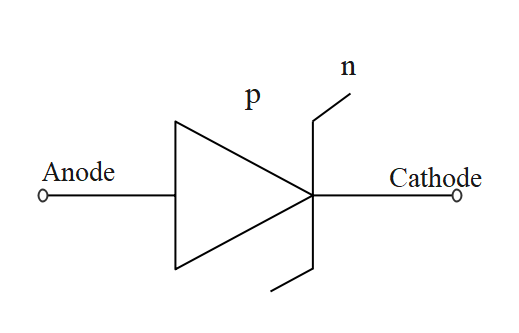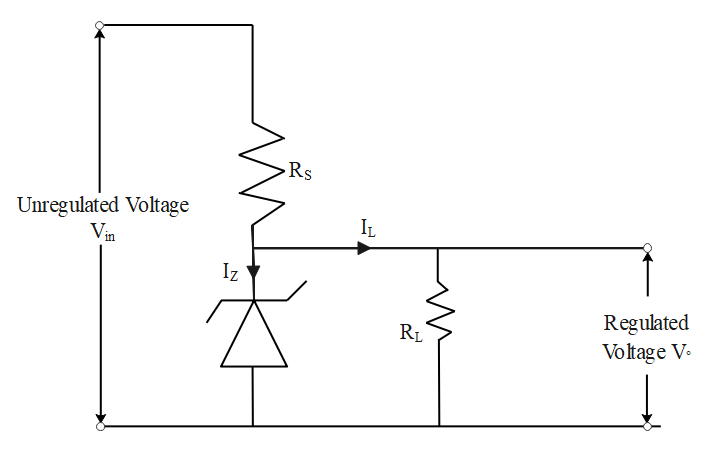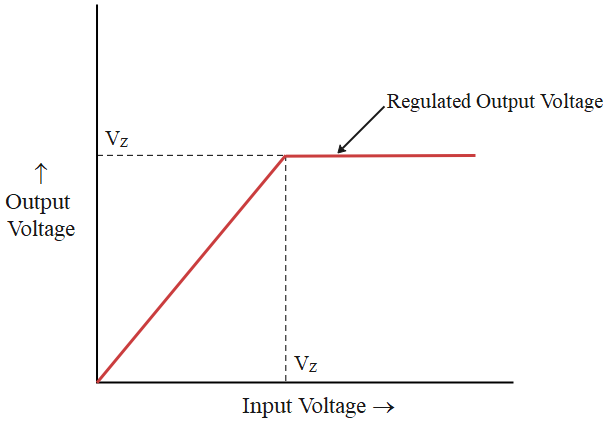
What is Zener diode? How is it used as a voltage regulator?
Answer
507.6k+ views
Hint: The word diode can be broken into two parts where di means two and ode comes from an electrode. It allows the passage of current in one direction only. Zener diode can be used as a voltage regulator because when it is operated in the reverse region, the voltage across it remains practically constant which is equal to its breakdown voltage.
Complete step by step answer:
A junction diode specially designed to operate in the reverse region of breakdown continuously without getting damaged is called Zener diode. This diode can be obtained by changing the doping concentration of p- and n- sides which, in turn, change the width of the depletion layer and also the barrier field across the junction.
Its electrical symbol is shown below:

When a Zener diode is operated in the reverse breakdown region, the voltage across it remains practically constant which is equal to its breakdown voltage
The figure below shows the circuit diagram for using a Zener diode as a voltage regulator. Here the Zener diode is connected in reverse bias to a source of fluctuating D.C. through a dropping resistor

If the input voltage also increases, the current through
Similarly, if the input voltage decreases, the voltage across
Hence Zener diode acts as a voltage regulator.
The following graph shows the output voltage versus the input voltage for a Zener diode. Clearly, the output voltage remains constant after the reverse breakdown voltage

Note: The internal field emission takes place beyond a certain reverse voltage which is known as Zener breakdown voltage. It results in a large reverse current or a breakdown current. The breakdown in a diode due to the band to band tunneling is called Zener breakdown.
Complete step by step answer:
A junction diode specially designed to operate in the reverse region of breakdown continuously without getting damaged is called Zener diode. This diode can be obtained by changing the doping concentration of p- and n- sides which, in turn, change the width of the depletion layer and also the barrier field across the junction.
Its electrical symbol is shown below:

When a Zener diode is operated in the reverse breakdown region, the voltage across it remains practically constant which is equal to its breakdown voltage
The figure below shows the circuit diagram for using a Zener diode as a voltage regulator. Here the Zener diode is connected in reverse bias to a source of fluctuating D.C. through a dropping resistor

If the input voltage also increases, the current through
Similarly, if the input voltage decreases, the voltage across
Hence Zener diode acts as a voltage regulator.
The following graph shows the output voltage versus the input voltage for a Zener diode. Clearly, the output voltage remains constant after the reverse breakdown voltage

Note: The internal field emission takes place beyond a certain reverse voltage which is known as Zener breakdown voltage. It results in a large reverse current or a breakdown current. The breakdown in a diode due to the band to band tunneling is called Zener breakdown.
Recently Updated Pages
Master Class 9 General Knowledge: Engaging Questions & Answers for Success

Master Class 9 English: Engaging Questions & Answers for Success

Master Class 9 Science: Engaging Questions & Answers for Success

Master Class 9 Social Science: Engaging Questions & Answers for Success

Master Class 9 Maths: Engaging Questions & Answers for Success

Class 9 Question and Answer - Your Ultimate Solutions Guide

Trending doubts
Give 10 examples of unisexual and bisexual flowers

Draw a labelled sketch of the human eye class 12 physics CBSE

Differentiate between homogeneous and heterogeneous class 12 chemistry CBSE

Differentiate between insitu conservation and exsitu class 12 biology CBSE

What are the major means of transport Explain each class 12 social science CBSE

What is the difference between resemblance and sem class 12 social science CBSE




